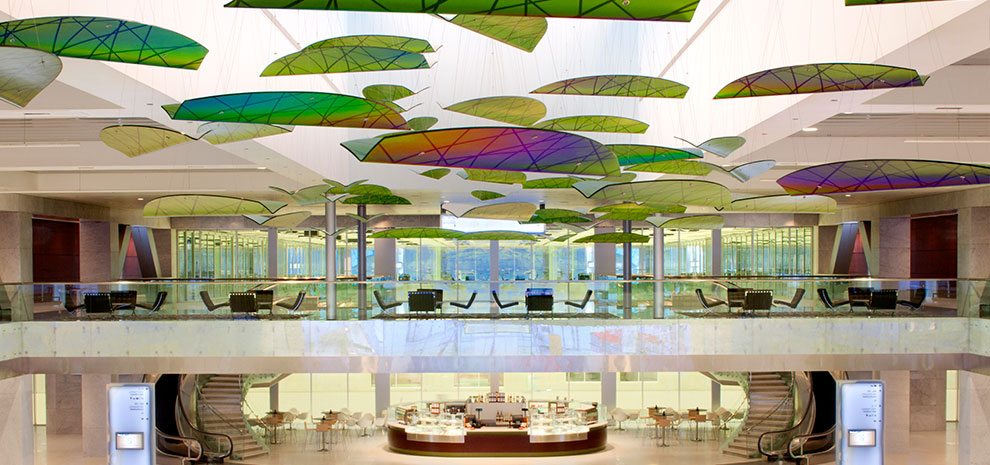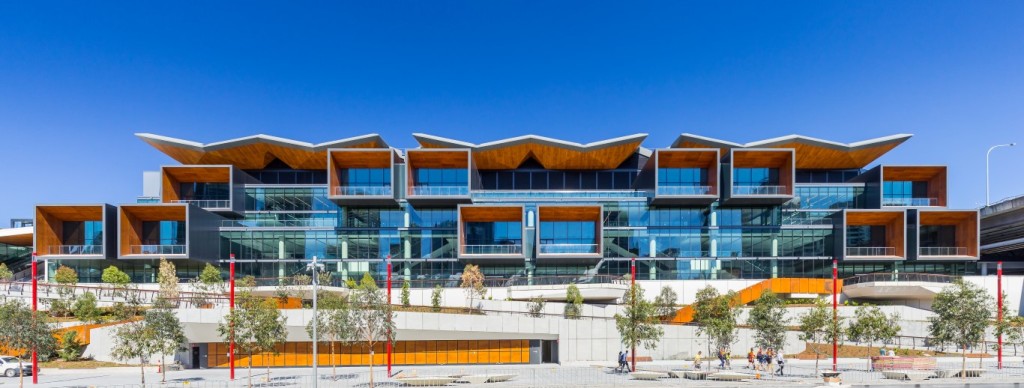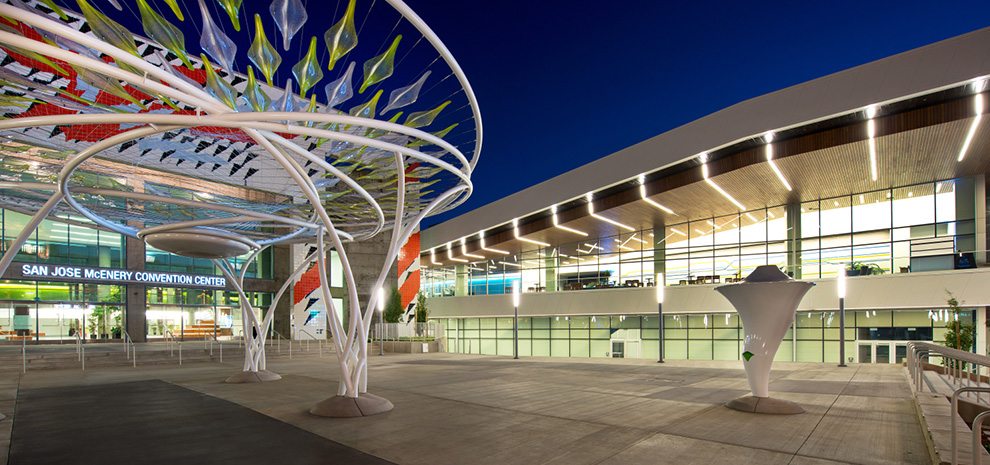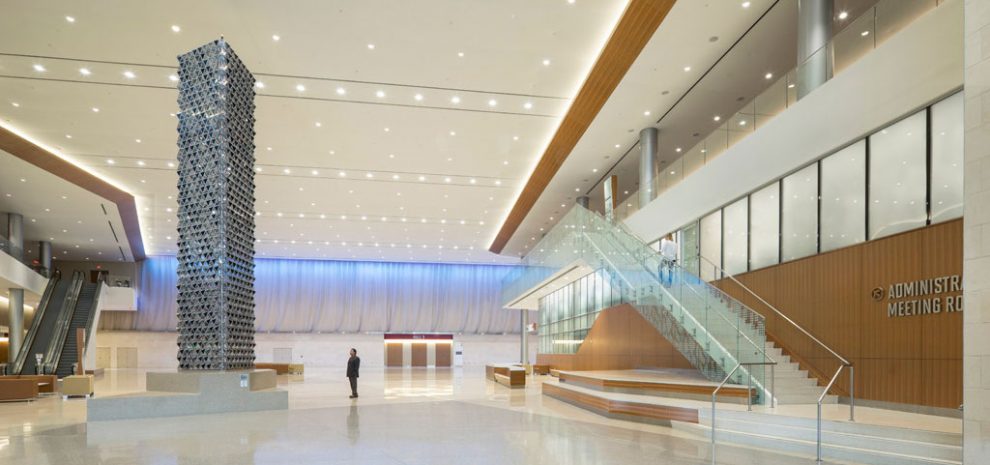
Q&ADR: Populous’ Michael Lockwood
Q&ADR: Populous’ Michael Lockwood
Share
Every week in our Q&ADR column, ADR interviews an architect, designer, object maker or industry person about who they are beyond the work – their life, inspiration, challenges and aspirations.
This week we meet Michael Lockwood, principal at Populous, a global architectural design firm specialising in creating environments and venues that draw communities and people together. Lockwood discusses the changing landscape of conference centre design and how they should integrate within the community for a more enriching experience.
Tell us a bit about yourself and your role at Populous
I’m a senior principal at Populous, operating out of the San Francisco office. I lead the firm’s convention centre practice and strive to be actively involved in all phases of design, production and presentation for public assembly projects. Recently completed projects I have been a part of include the expansion of the Qatar National Convention Centre in Doha, Qatar, the San Jose McEnery Convention Center in San Jose, California and the International Convention Centre Sydney (ICC Sydney).

Qatar National Convention Centre by Populous. Render courtesy Populous.
A lot of your focus is on conference centre design. What is the status of this niche at the moment and how has it changed over the last decade or so?
When it comes to building design – specifically convention centres – we’re seeing three trends in the marketplace that aim to maximise the experience for evolving guest preferences: occupying the edge, maximising experiential moments and creating transparent development.
Occupying the edge refers to the need for convention centres to integrate with surrounding city landmarks, as it’s the in-between spaces which offer unique and authentic opportunities within a destination. Maximising experiential moments highlights the importance of addressing the FOMO economy, or ‘fear of missing out’, by creating unique social spaces to drive more revenue. Lastly, creating transparent development means designing these large facilities in a delicate manner in order to catalyse district growth instead of creating a building that focuses solely on itself.
ICC Sydney (designed by Hassell + Populous), is a powerful design solution – the complex of buildings has had a profoundly positive impact on the district by responding appropriately to the harbour, the green space and the urban core. The design deftly incorporates current trends shaping conference centre design while providing moments for the community and future generations that will continue to inhabit the space in new and different ways. We aim to create facilities that can be adapted for current and future users, maintaining relevance for years to come.

ICC Sydney by HASSELL Populous. Render courtesy the architects.
What mistakes do people often make when designing new conference centres or renovating old ones?
It’s imperative to understand the true economic impact conference centres are intended to have – enticing visiting guests to engage with the local community by staying in hotels, eating at local restaurants and exploring the destination to ensure they return again and again. A conference centre providing introverted experiences – one that is too self-absorbed or not integrated into the community – will not capitalise on these carry-on economic benefits. Conference centres should facilitate focus and learning, but also encourage the guest to explore and engage with the local community, the building must also sell the entire destination.
You say that clients are now often asking for ‘unique spaces’ over ‘more space.’ What are some examples of unique spaces and how can this be achieved?
Guests are no longer comfortable with starting and stopping their lives to attend a conference or participate in an event. Instead of providing ‘more contiguous space’, we aim to provide a ‘contiguous experience’ to allow for special moments where guests can stay connected to their lives by interacting socially on their terms, check in with family, friends or colleagues via social media or simply engage visually with the destination from a different perspective. Party decks, outdoor meeting venues, unique meeting rooms with dramatic views of the destination – these are a few examples of carefully crafted moments we are incorporating into the design of our facilities to enable guests to have a much more enriching experience.

San Jose McEnery Convention Center Expansion by Populous. Render courtesy Populous.
What are the biggest challenges and rewards in designing these spaces?
Whether it’s a stadium, performing arts centre, airport or convention centre, it is vital for city officials to view these opportunities for their broader development potential. If you’re looking at these buildings as simply standalone facilities, you’re not fully capitalising on your investment. Convention centres, in particular, are often frowned upon by budget analysts because, as standalone projects, some facilities generate positive net revenue, but many do not. However, when understood in the broader context of the economic impact they create within the community, they are revealed to be a very important asset.
Do you find a lot of technology being integrated into conference centres?
Technology needs to facilitate the human experience, not replace it. Guests come to conference centres to engage with other professionals, continue their professional development and experience new and better ways of doing things. Integrated technology can facilitate these things by providing a more fluid experience while allowing guests to stay connected to their lives. Ideally, integrated technology in conference centres would be on par or better than what we experience in our daily lives – robust and ever-present wi-fi for immediate sharing of content, interactive displays to experience learning in new and better ways, and interactive kiosks to help connect guests to district attractions they might find interesting – these are a few examples of integrated technologies in conference centres being built today.

Henry B. Gonzalez Convention Center by Populous. Render courtesy Populous.
What do you see as the future for conference centre design?
As our cities become denser, the future of conference centre design must find a way to provide an adequate amount of space while simultaneously integrating conference guests within the local community for authentic experiences. These elements need not be at odds with each other – rather the balance and execution of these elements will continue to create memorable moments for conference centre guests. These facilities also need to remain relevant for decades – conference centres need to provide moments for shared ‘iconic experiences’ while maintaining adaptability by future generations.
You are speaking at DesignBUILD next week. What can we expect from your talk?
I’ll be discussing international trends in convention centre design through the lens of ICC Sydney, exploring how new thinking in the design of these large civic buildings is helping to redefine the conference experience, as well as connecting venues to the local community and showcasing what the best cities, like Sydney, have to offer.
—
Lockwood’s talk, International Trends in Convention Centre Design – Exporting ICC to the World, will take place as part of DesignBUILD’s Speaker Series at theatre one on 4 May at ICC Sydney. For more information and to attend, click here.
HASSELL + Populous were joint venture design consultants for ICC Sydney. A NSW Government project, ICC Sydney was delivered in partnership with Darling Harbour Live, comprising Lendlease, Hostplus, First State Super, Capella Capital, AEG Ogden and Spotless FM.
—
If you’d like to be featured in Q&ADR, simply email adrteam@niche.com.au with a little introduction of yourself.
You Might also Like
























